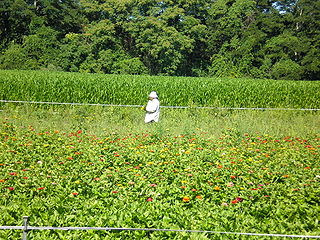
Foreign workers or guest workers are people who work in a country other than one of which they are a citizen. Some foreign workers use a guest worker program in a country with more preferred job prospects than in their home country. Guest workers are often either sent or invited to work outside their home country or have acquired a job before leaving their home country, whereas migrant workers often leave their home country without a specific job in prospect.
The Malayali people are a Dravidian ethnolinguistic group originating from the present-day state of Kerala in India, occupying its southwestern Malabar coast. They form the majority of the population in Kerala and Lakshadweep. They are predominantly native speakers of the Malayalam language, one of the six classical languages of India. The state of Kerala was created in 1956 through the States Reorganisation Act. Prior to that, since the 1800s existed the Kingdom of Cochin, the Kingdom of Travancore, Malabar District, and South Canara of the British India. The Malabar District was annexed by the British through the Third Mysore War (1790–92) from Tipu Sultan. Before that, the Malabar District was under various kingdoms including the Zamorins of Calicut, Kingdom of Tanur, Arakkal kingdom, Kolathunadu, Valluvanad, and Palakkad Rajas.

A migrant worker is a person who migrates within a home country or outside it to pursue work. Migrant workers usually do not have an intention to stay permanently in the country or region in which they work.

Nadodikkattu is a 1987 Indian Malayalam-language satirical comedy film directed by Sathyan Anthikad and written by Sreenivasan based on a story by the Siddique–Lal duo. It stars Mohanlal and Sreenivasan in the lead roles, along with an ensemble supporting cast featuring Shobhana, Thilakan, Innocent, Mamukkoya and Captain Raju. The story revolves around two impecunious young men, Ramdas and Vijayan who not being able to find any job in Kerala, plan to immigrate to Dubai to make their fortunes but get deceived and end up in Chennai. The film drew upon relevant social factors affecting Kerala of the 1980s such as widespread unemployment and poverty.
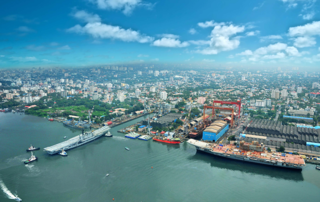
The economy of Kerala is the 9th largest in India, with an annual gross state product (GSP) of ₹9.78 lakh crore in 2020–2021. Per-capita GSP of Kerala during the same period is ₹257,711 (US$3,200), the sixth largest in India. In 2019–20, the tertiary sector contributed around 63% of the state's GSVA, compared to 28% by secondary sector, and 8% by primary sector.
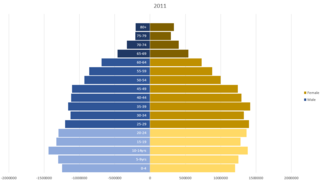
Kerala is a state in south-western India. Most of Kerala's 34.8 million people are ethnically Malayalis. Most of the Malayalam and English speaking Keralites derive their ancestry from Dravidian communities that settled in Kerala. Additional ancestries derive from millennia of trade links across the Arabian Sea, whereby people of Arab, Jewish, Syrian, Portuguese, English and other ethnicities settled in Kerala. Many of these immigrants intermarried with native Malayalam speakers resulting in formation of many Muslim and Christian groups in Kerala. Some Muslims and Christians thus take lineage from Middle Eastern and European settlers who mixed with native population.
Indians in the United Arab Emirates constitute the largest part of the population of the country. Over 3,860,000 Indian expats are estimated to be living in the UAE, which is over 38 percent of the total population of the UAE and the fourth highest number of overseas Indian people in the world, after the United States, Saudi Arabia and Nepal. Indian contact with the emirates that now constitute the UAE dates back several centuries, as a result of trade and commerce between the emirates and India. The UAE has experienced a tremendous increase in the population of resident Indians who initially migrated to the country as a result of opportunities in petroleum. Now, Indians are key to the UAE's construction, retail, financial services, healthcare, manufacturing and transport sectors. A sizeable minority of Indian migrants are involved in professional services and entrepreneurship. Relations between India and the UAE have traditionally been very friendly.

The population of Kerala, India is a heterogenous group that comprises many ethnic groups that originated in other parts of India as well as the world, with distinctive cultural and religious traditions. While the majority of Keralites speak the Malayalam language, various ethnic groups may speak other languages as well.

Malik Mohammed Hassan is a leader of the Indian National Congress and a former Minister in the Government of Kerala and also former president of KPCC. He has served the Kerala Legislative Assembly for over two decades as part of the INC. Being a strong orator and a respected parliamentarian recognised among his peers for his integrity and an inspirational leader accepted by the public, he has always been considered as a true leader who upheld the concept of secularism and nationalism.

Non-Resident Indians (NRIs) in Saudi Arabia are the largest community of expatriates in the country, with most of them coming from the states of Andhra Pradesh, Jharkhand, West Bengal, Karnataka, Kerala, Maharashtra, Tamil Nadu, Telangana and most recently, Bihar, Uttar Pradesh and Gujarat.
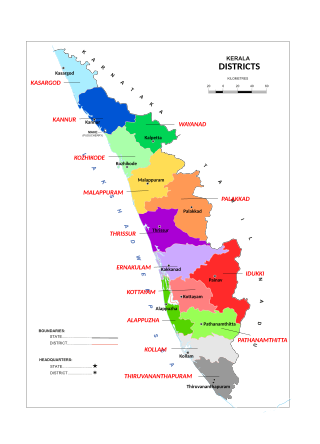
Migrant labourers in Kerala, India's southernmost state, are a significant economic force in the state; there were around 2.5 million internal migrants in Kerala according to a 2013 study by the Gulati Institute of Finance and Taxation. Every year, the migrant worker population in Kerala increases by 2.35 lakh (235,000) people. The study, based on long-distance trains terminating in Kerala, does not cover migrants from the neighbouring states who use other modes of transport. Assuming that the estimation is rigorous and extrapolating it, taking into account the net annual addition, possible growth in migration rate, as well as accounting for the migration from the neighbouring states, Kerala is likely to have 5 to 5.5 million inter-state migrant workers in 2020. Despite their importance and despite many of them praising the state for its welfare schemes and environment, they are often ignored in comparison and suffer from comparatively poor living conditions.

Aadujeevitham is a 2008 Malayalam-language novel by Indian author Benyamin. It is about an abused Malayali migrant worker employed in Saudi Arabia as a goatherd against his will.

Pathemari (transl. Dhow) is a 2015 Indian Malayalam-language period drama film written and directed by Salim Ahamed and starring Mammootty in the lead role, with a supporting cast that includes Jewel Mary, Siddique, Sreenivasan, Salim Kumar, Shaheen Siddique, Viji Chandrasekhar, and Joy Mathew. The plot follows the life of Pallikkal Narayanan (Mammootty) who migrated to the Middle-East in the early 1960s, when the Kerala Gulf boom was just beginning.

The South Indian diaspora comprises people who have emigrated from South Indian states to other Indian states and other countries, and people of South Indian descent born or residing in other Indian states and other countries.
Migrant workers in the Gulf Cooperation Council region involves the prevalence of migrant workers in the Kingdom of Bahrain, the State of Kuwait, the Sultanate of Oman, the State of Qatar, the Kingdom of Saudi Arabia and the United Arab Emirates (UAE). Together, these six countries form the Gulf Cooperation Council (GCC), established in 1981. The GCC cooperates on issues related to economy and politics, and the subject of migrant workers constitutes a substantial part of the council's collaboration. All of the GCC countries are dependent on migrant labor to bolster and stimulate economic growth and development, as the GCC countries possess an abundance of capital while the domestic labor capacity is low. Although migrant workers in the Persian Gulf region amount to no more than 10% of all migrants worldwide, they constitute a significant part of the populations of their host countries.

Malaysian Malayalees, also known as Malayalee Malaysians, are people of Malayali descent who were born in or immigrated to Malaysia from the Malayalam speaking regions of Kerala. They are the second largest Indian ethnic group, making up approximately 15% of the Malaysian Indian population. The bulk of Malaysian Malayali migration began during the British Raj, when the British facilitated the migration of Indian workers to work in plantations, but unlike the majority Tamils, the vast majority of the Malayalis were recruited as supervisors in the oil palm estates that followed the kangani system, and some were into trading and small businesses with a significant proportion of them running groceries or restaurants. Over 90% of the Malayalee population in Malaysia are Malaysian citizens.
The Malayali Diaspora refers to Malayali who live outside their homeland of Indian state of Kerala and Union Territories of Mahé, India and Lakshadweep. They are predominantly found in the Persian Gulf, North America, Europe, Australia, Caribbean, Africa and other regions around the world.

The COVID-19 pandemic has impacted migrants throughout the globe. Low-skilled migrants, refugees, and internally-displaced migrants are at a higher risk of contracting the virus. The pandemic has also aggravated the dangers of already-dangerous migration routes. Since the outbreak of COVID-19, international organizations have recorded a spike in human rights abuses suffered by migrants, especially in Africa, Latin America, and Asia. The restrictions on travel, imposed as a measure to contain the virus, have resulted in a rise in "stranded migrants," individuals who want to return to their home countries but cannot.
Unemployment in Kerala discusses the causes and measures of Kerala unemployment and strategies for reducing it. Job creation and unemployment are affected by factors such as economic conditions, global competition, education, automation, and demographics. These factors can affect the number of workers, the duration of unemployment, and wage levels.
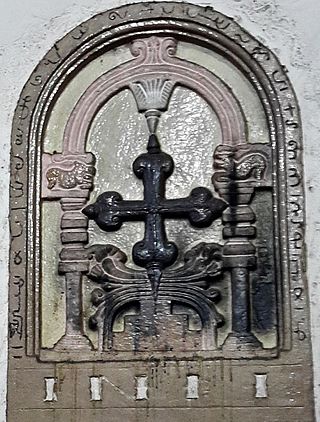
Pentecostal Saint Thomas Christians, also called Pentecostal Syrian Christians, are the ethnic Saint Thomas Christians (Nasranis) affiliated to various Pentecostal and independent Neo-Charismatic churches. Sometimes, the Kerala Brethren are also erroneously lumped together with Pentecostals. The community is native to the Indian state of Kerala, and shares in the legacy of early Christianity in the region, traditionally traced to the missionary activities of Saint Thomas the Apostle in the first century. Prior to their conversion to Pentecostalism, they belonged to traditional Saint Thomas Christian denominations.














